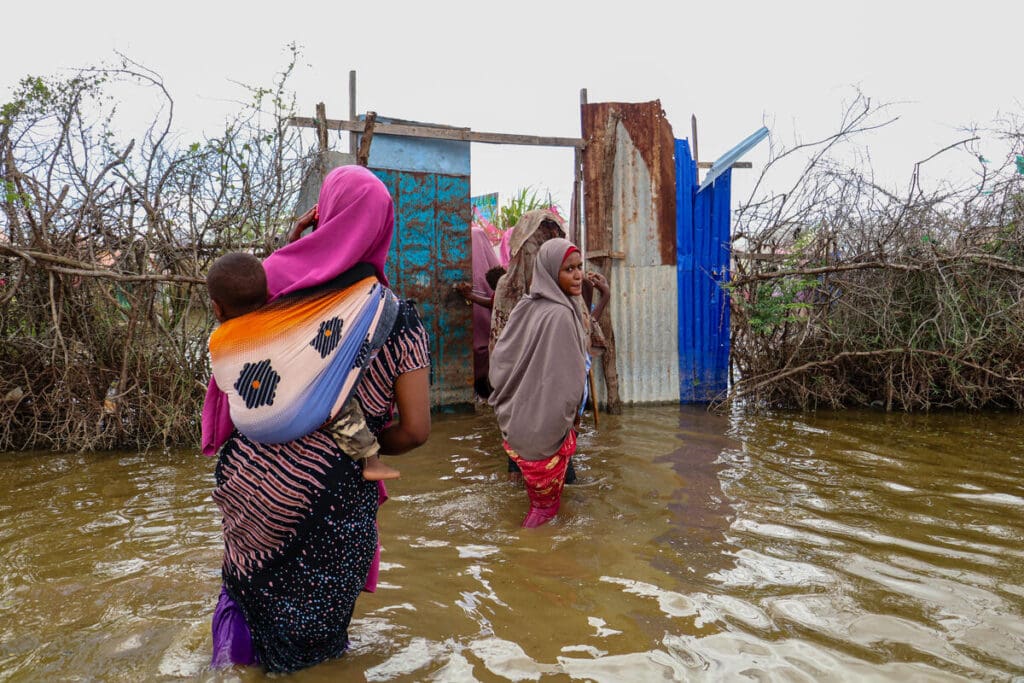The Worst Is yet to Come: Severe Floods Ravage Eastern Africa, Threatening More Hunger

NAIROBI – Devastating floods threaten to worsen hunger across Eastern Africa as heavy rains lash a region that less than a year ago was in the grips of drought, warns the United Nations World Food Programme (WFP).
Climate change continues to wreak havoc in Eastern Africa, a region with minimal emissions yet bears the brunt of the global climate emergency. Five consecutive failed rainy seasons from 2020 to 2022 resulted in a devastating drought that pushed millions into hunger and malnutrition as livelihoods were destroyed at a massive scale – damage that will take families and communities many years to recover.
Now that nascent recovery is being swept away by floods. Since the start of the October-December rains, rainfall 140% above average has destroyed property, infrastructure, and crops, and washed away livestock. Scores of lives have also been lost.
Nearly 3 million people have been affected, with more than 1.2 million forced to leave their homes. Somalia, Ethiopia, and Kenya are bearing the brunt of this crisis, closely followed by Sudan, South Sudan, Burundi, and Uganda. Unfortunately, the rains are expected to persist until early 2024.
“Eastern Africa is being lashed by the extremes of climate change – from no water to too much water. Severe floods are causing devastation, illustrating how an erratic climate continues to punish the region. With more rain forecast, I fear that the worst is yet to come,” said Michael Dunford, U.N. World Food Programme Regional Director in Eastern Africa.
The U.N. World Food Programme has provided food and cash assistance to nearly 580,000 people affected by the floods across the Horn of Africa, in addition to those supported through our pre-existing relief operations.
In Somalia and Burundi, the U.N. World Food Programme provided anticipatory assistance to 230,000 people prior to the floods, including through early warnings and cash transfers. People were able to use this information and money to prepare either by moving or buying essential supplies. Anticipatory action initiatives like this mean fewer people need humanitarian assistance after disasters hit.
In Ethiopia, above average rains have caused flooding in southern and southeastern parts of the country. It is estimated that 1.5 million people have been impacted in Afar, Amhara, Gambella and Oromia. In the Somali region, one of the most food-insecure regions of Ethiopia, more than 1.1 million people are affected by the floods, including more than 400,000 displaced people.
“The U.N. World Food Programme is supporting governments and humanitarian partners with logistics services across the region. However, the scale of the crisis demands more support and expanding our operations. We are actively working to secure additional resources to reach up to 2 million more people affected by the floods. The need is urgent, and we cannot do it alone,” Dunford adds.
“It is particularly crucial at the UN Climate Change Summit in Dubai that developed nations to step up and assist countries, like Somalia and Ethiopia, which are disproportionately paying a high price for the climate crisis. We need to break the never-ending cycle of crisis and respond with climate action that focuses on preparedness and protection before predictable shocks hit,” Dunford concluded.
Note to editors:
Broadcast quality footage available here
# # #
The United Nations World Food Programme is the 2020 Nobel Peace Prize Laureate and the world’s leading humanitarian organization, saving lives in emergencies and using food assistance to build a pathway to peace, stability and prosperity for people recovering from conflict, disasters and the impact of climate change.
Follow us on Twitter @WFPUSA, @wfp_media and @WFP_Africa




